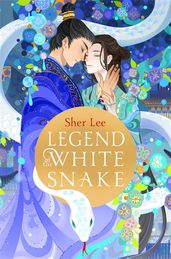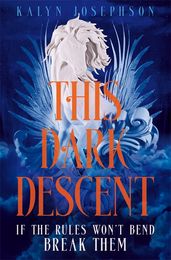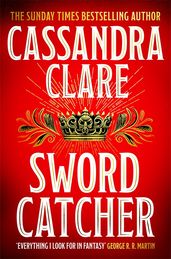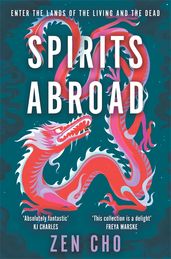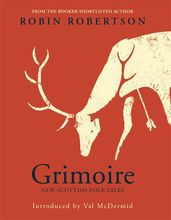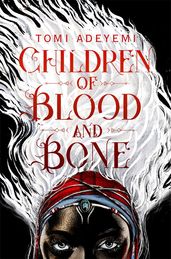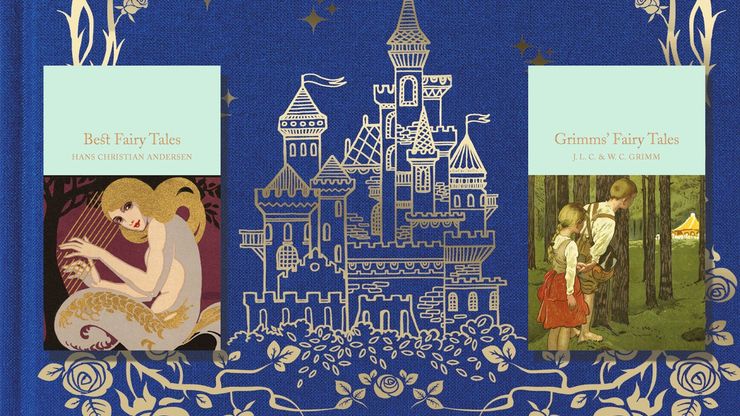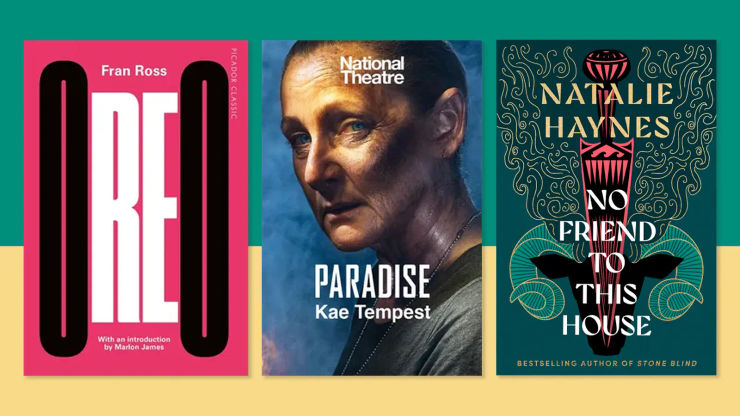Brilliant books based on folklore
Our edit of some of the best books inspired by folklore and traditional stories, introduced by Lucy Holland.

I see folklore as collected experience, compressed into the easily-communicable form of stories, poems and sayings. Its wisdom can be at once profound and extremely silly. It is uniquely human, able to speak to people on a fundamental level in a way quite unlike anything else. This universal appeal fascinates me. One glance at an index like the Aarne–Thompson–Uther reveals that the same stories crop up again and again. The same narrative patterns. Although separated by time, geography and beliefs, we all fear similar things. We take joy in similar things. This truth lies at the heart of mythology and folklore, and so helps to account for the enduring popularity of books exploring folkloric motifs.
Arthur is probably the most famous folk hero in Celtic mythology, but his canon barely scratches the surface. In writing my books on folklore, I am crooking a finger, hoping to beckon readers into the darker depths of Celtic myth. There is much to discover there – about ourselves and our world. Other authors of contemporary folklore books are doing the same in their chosen fields, turning to the voices of the ancestors, extending a hand across time to pluck new meaning from ancient tales.
Here are brilliant books based on folklore and traditional tales, including YA, fantasy and poetry.
The Hill in the Dark Grove
by Liam Higginson
This chilling literary horror combines exquisite writing with an increasing sense of unease to create a sinister, atmospheric tale based on Welsh folklore. When Carwyn discovers a buried prehistoric ruin in one of the fields on his land, his curiosity quickly descends into obsession. As the harsh winter closes in, his wife, Rhian, finds herself alone with her increasingly peculiar husband, and the mountains, and the looming megalithic stones. . .
Song of the Huntress
by Lucy Holland
Song of the Huntress recasts the folklore behind the Wild Hunt into a dark, feminist fantasy set amidst the legends and beauty of ancient Britain. Threatened by the prospect of the Romans defeating her lover and the land she loves so much, Herla makes a deadly pact with the Otherworld King, who transforms her into the Lord of the Hunt. Over the next centuries she rides, stealing souls, until she meets a woman who will change her forever. From the bestselling author of Sistersong, Song of the Huntress is an impeccably researched and beautifully written story of history, fantasy and folklore.
A Song to Drown Rivers
by Ann Liang
Inspired by an ancient Chinese folklore story, A Song to Drown Rivers tells the story of Xishi, a young woman whose extraordinary beauty offers her the chance to save her kingdom. Spotted by military advisor Fanli, Xishi is tasked with going undercover as a spy in the palace of the enemies who killed her sister and terrorised her people. Hiding in plain sight, Xishi must avoid the hungry eyes of the king and his advisors as well as her growing attraction to Fanli to ensure their secret identities are kept hidden.
Legend of the White Snake
by Sher Lee
Prince Xian is on a mission. Desperate for the antidote to the snake bite that is slowly killing his mother, he scours the land for a rare white snake needed to create the cure. Along the way, he meets Zhen, a young stable boy to whom he is immediately drawn to. As the pair fall head over heels for each other, Zhen’s secret threatens to destroy their new love. In this queer romantasy retelling of one of the best-loved ancient Chinese folktales, Sher Lee reimagines the Legend of the White Snake.
This Dark Descent
by Kalyn Josephson
Corrupt monarchs. Forbidden magic. Illicit romance. This pacey YA fantasy is set in the world of cut-throat horse racing and steeped in Jewish folklore. Mikira's father is in prison; her family buried in debt. The only option to save them all from ruin is to enter the Illinir, a high-risk, high-reward cross-country horse race. Mikira recruits a crew of shady accomplices to help win the race. But each has their own reason for joining forces, and as alliances and romances deepen, Mikira needs to work out where everyone's true loyalties lie.
Sword Catcher
by Cassandra Clare
The magic in Cassandra Clare's first book for adults is inspired by Jewish tradition and mythology. Two outcasts find themselves at the centre of world-altering change. In Castellane, Kel is stolen to become Prince Conor Aurelian’s body-double. As his ‘Sword Catcher', Kel lives for one purpose: to die for Conor. Lin Caster is an Ashkar physician, part of a community ostracised for its rare magical abilities. But events pull her and Kel together and into the web of the mysterious Ragpicker King who rules Castellane’s criminal underworld. Together, they’ll discover an extraordinary conspiracy. But can forbidden love bring down a kingdom?
Spirits Abroad
by Zen Cho
These nineteen short stories by the author of Black Water Sister draw inspiration from Asian myth and folklore. An elderly ex-member of parliaments recalls a forbidden love with a jungle spirit. A teenage vampire struggles to find a good homework/eating people balance. A mischievous matriarch returns from the dead to disrupt her own funeral rites. And Chang E, the Chinese moon goddess, spins off into outer space.
Grimoire
by Robin Robertson
A grimoire is a manual for invoking spirits, and in this poetry collection Robin Robertson calls up strange new forms based on Celtic folk tradition. There are tales of violence, madness and retribution, of second sight, witches, ghosts, selkies, changelings and doubles, all bound within a larger mythology, narrated by a doomed shape-changer – a man, beast or god – and all full of the same charged beauty as the Scottish landscape.
She Who Became the Sun
by Shelley Parker-Chan
A queer retelling of a legendary Chinese ruler's rise to power. In a famine-stricken village on a dusty plain, a seer shows two children their fates. For a family’s eighth-born son, there’s greatness. For the second daughter, nothing. In 1345, China lies restless under harsh Mongol rule. And when a bandit raid wipes out their home, the two children must somehow survive. Zhu Chongba despairs and gives in. But the girl resolves to overcome her destiny. So she takes her dead brother's identity and begins her journey. Can Zhu escape what’s written in the stars, as rebellion sweeps the land? Or can she claim her brother’s greatness – and rise as high as she can dream? The sequel, He Who Drowned the World, is also out now.
Children of Blood and Bone
by Tomi Adeyemi
A dark and dangerous piece of West African-inspired fantasy YA. Forced to hide her magic by the tyrannical rule of a ruthless king, Zélie finds herself with a chance to bring magic back to her people and take down the oppressive monarchy. She must learn to harness her powers and outrun the crown prince, who is hell-bent on eradicating magic for good. But danger lurks around every corner, vengeful spirits wait in the waters and Zélie herself is struggling to come to terms with the strength of her magic. Can the help of a rogue princess help Zélie overcome her enemies – and herself?
Love in Colour
by Bolu Babalola
A high-born Nigerian goddess feels beaten down and unappreciated by her gregarious lover and longs to be truly seen. A young businesswoman attempts to make a great leap in her company, and an even greater one in her love life. A powerful Ghanaian spokeswoman is forced to decide whether to uphold her family's politics, or to be true to her heart. Bolu Babalola finds the most beautiful love stories from history and mythology and rewrites them with incredible new detail and vivacity.
The Icarus Girl
by Helen Oyeyemi
This story of an increasingly sinister friendship between two little girls is inspired by Nigerian folklore. The mixed race daughter of an English father and a Nigerian mother, Jessamy Harrison feels alone wherever she goes, and other kids are wary of her terrified fits of screaming. When she is taken to her mother's family compound in Nigeria, she encounters Titiola, a ragged little girl her own age. It seems that at last Jess has found someone who will understand her. TillyTilly knows secrets both big and small. But, as she shows Jess just how easy it is to hurt those around her, Jess begins to realise that she doesn't know who TillyTilly is at all.



